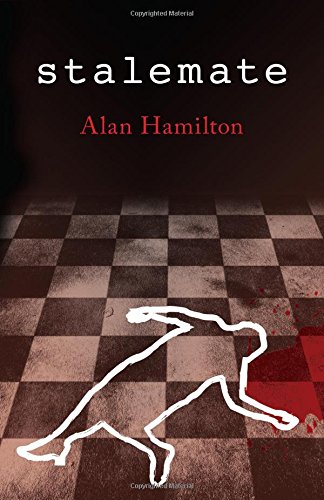Stalemate
Set in the early 1930s, this intriguing novel, based on a real-life case, follows the progress of Walter Bruce, a door-to-door insurance salesman, as he tries to stage the perfect murder of his wife. His motive? The diagnosis of a terminal illness that will kill him sooner if he does not escape the stress of living with her.
Discovering dark secrets about this wife steels his determination to be rid of her, and he blackmails two others into helping him commit the crime. Despite strategic thinking powers nurtured by his passion for chess, Bruce’s plan misfires, and he must face the consequences.
While it is difficult to warm to any of the characters, the omniscient narrator makes it easy to understand Bruce’s motivation and actions. At times the story reads like journalism, telling rather than showing, particularly during the courtroom scenes, but although that approach is often decried in fiction, it actually worked rather well here.
Although I disliked Bruce, I also felt very sorry for him, constrained in the narrow world of his time and class. His dreary world of lower-middle-class suburbia offers no real hope of betterment, and he only deludes himself when he tries to improve his lot.
Hamilton evokes the era very well, weaving the atmosphere and practical details seamlessly into the narrative. At every turn one is struck by the contrast between the 1930s and the present day, especially in terms of communication technology and social mobility. Although phone calls were traceable from public call boxes, detectives had little other than their wits and circumstantial evidence to help them solve crimes. The essential story, however, is timeless. I particularly liked the production values and cover design of this book – the chess board in a subdued, slightly sinister colour way, with an outline of a dead body and a splash of blood, is very effective.










